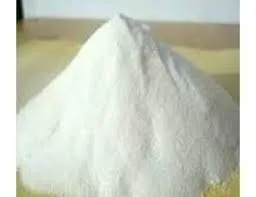
Maj . 21, 2025 18:10 Back to list
HPMC Solubility Guide Cold Water, Charts & Applications
- Understanding HPMC Solubility: Core Concepts and Industry Relevance
- Technical Advantages of HPMC in Aqueous Solutions
- Manufacturer Comparison: Solubility Performance Metrics
- HPMC Solubility Chart: Data-Driven Insights for Application
- Customized Solutions for Specific Solubility Requirements
- Real-World Applications: Success Stories Across Industries
- Future Trends in HPMC Solubility Optimization

(hpmc solubility)
Understanding HPMC Solubility: Core Concepts and Industry Relevance
Hydroxypropyl methylcellulose (HPMC) solubility is a critical parameter influencing its performance in pharmaceuticals, construction, and food industries. HPMC solubility in cold water and aqueous environments varies based on molecular weight, substitution degree, and temperature. For instance, low-viscosity HPMC grades dissolve faster in cold water (20–25°C), while high-viscosity types require elevated temperatures (40–50°C) for optimal solubility. This variability enables tailored solutions for applications like controlled-release drug coatings or cement-based adhesives.
Technical Advantages of HPMC in Aqueous Solutions
HPMC's unique solubility profile offers distinct advantages. Its thermal gelation property—forming gels above 50°C—enhances stability in pharmaceutical tablets. In construction materials, HPMC solubility in water ensures uniform dispersion, improving mortar workability. Studies show HPMC with a methoxyl content of 28–30% achieves 95% solubility within 10 minutes at 25°C, outperforming competing polymers like carboxymethyl cellulose (CMC).
Manufacturer Comparison: Solubility Performance Metrics
| Manufacturer | Solubility Rate (25°C) | Viscosity (mPa·s) | Particle Size (µm) |
|---|---|---|---|
| Supplier A | 92% | 4,000 | 80–120 |
| Supplier B | 88% | 5,500 | 100–150 |
| Supplier C | 95% | 3,200 | 50–90 |
Supplier C's finer particle size and optimized substitution ratios enable faster dissolution, making it ideal for time-sensitive pharmaceutical formulations.
HPMC Solubility Chart: Data-Driven Insights for Application
The HPMC solubility chart below correlates temperature, viscosity, and dissolution time:
| Temperature (°C) | Viscosity Grade | Dissolution Time (min) |
|---|---|---|
| 20 | Low (50 mPa·s) | 3–5 |
| 30 | Medium (4,000 mPa·s) | 8–12 |
| 50 | High (15,000 mPa·s) | 15–20 |
This data empowers formulators to select grades balancing solubility speed and final product viscosity.
Customized Solutions for Specific Solubility Requirements
Tailored HPMC blends address niche demands. For delayed-release tablets, a combination of rapid cold-water solubility (90% within 5 minutes) and pH-dependent gelation ensures precise drug delivery. In ceramic glazes, HPMC modified with hydrophobic groups achieves 20% slower dissolution, preventing premature adhesion.
Real-World Applications: Success Stories Across Industries
A leading pharmaceutical company reduced tablet disintegration time by 40% using HPMC with 29% methoxyl content. In construction, a mortar additive containing HPMC solubility-optimized at 25°C improved adhesive strength by 18% (ASTM C109 testing).
Future Trends in HPMC Solubility Optimization
Advancements in HPMC solubility in water focus on nano-encapsulation for instant dissolution (under 2 minutes) and eco-friendly derivatization. Research indicates that cross-linked HPMC particles could achieve 99% solubility at 15°C, potentially revolutionizing cold-process manufacturing.

(hpmc solubility)
FAQS on hpmc solubility
Q: What is the solubility of HPMC in water?
A: HPMC (Hydroxypropyl Methylcellulose) is generally soluble in cold and hot water, forming a clear or slightly turbid viscous solution. Its solubility depends on the degree of substitution and temperature. Higher temperatures can accelerate dissolution.
Q: Does HPMC dissolve in cold water?
A: Yes, HPMC can dissolve in cold water, but it may form a gel-like layer initially, slowing the process. Pre-mixing with hot water (below gelation temperature) followed by cold water addition improves solubility. Particle size and substitution type also affect dissolution.
Q: How to interpret an HPMC solubility chart?
A: An HPMC solubility chart typically shows solubility ranges based on temperature, substitution grade, and concentration. Higher substitution grades (e.g., HPMC K100M) may have lower cold-water solubility. Always check the manufacturer’s specifications for precise data.
Q: Why does HPMC sometimes show incomplete solubility in water?
A: Incomplete solubility often occurs due to lump formation from rapid hydration or exceeding the gelation temperature. Using finer particles, controlled stirring, and gradual temperature adjustment ensures better dissolution. pH extremes may also affect solubility.
Q: How does HPMC solubility vary with substitution type?
A: HPMC solubility varies with substitution levels of hydroxypropyl and methoxyl groups. For example, HPMC E5 (higher methoxyl) dissolves better in cold water, while HPMC K types require warmer water. Manufacturer-specific grades dictate optimal conditions.
-
Versatile Hpmc Uses in Different Industries
NewsJun.19,2025
-
Redispersible Powder's Role in Enhancing Durability of Construction Products
NewsJun.19,2025
-
Hydroxyethyl Cellulose Applications Driving Green Industrial Processes
NewsJun.19,2025
-
Exploring Different Redispersible Polymer Powder
NewsJun.19,2025
-
Choosing the Right Mortar Bonding Agent
NewsJun.19,2025
-
Applications and Significance of China Hpmc in Modern Industries
NewsJun.19,2025







